Eriu: Powerful Irish Goddess And Sacred Uisneach Hill Where She And God Lugh Are Buried
A. Sutherland - AncientPages.com - Eriu (also known as Éire or Erin), was the Irish goddess of earth, according to ancient beliefs.
In ‘The Book of Invasions’ (or the “Book of Conquests”), the 11th century’s work based on poems, narrative prose and oral traditions related to the legendary history of Ireland, is written that Eriu, and her two sisters, Banba, Fótla were a trio of queen-goddesses.
During the time of the Milesian Invasion, the sister-goddesses were respectively married to the three Danaan kings of the Tuatha Dé Danann, Mac Grené (‘Son of the Sun’), Mac Cuill (‘Son of Hazel’) and Mac Cécht (‘Son of the Plough’).
The three Danann kings were grandsons of the Dagda, god of life and death and chief of the Tuatha De Danann.
At different times, each of the names of the three sister-goddesses (Banba, Fótla and Eriu) have been applied to Ireland, of which the last surviving is “Erin” and is related to Eriu, a member of the Tuatha de Danann, Ireland's original gods.
Along with her two sisters, Eriu was the Irish goddess of sovereignty and her name has often been associated with soil, earth and land of abundance.
Arrival Of The Milesians
The “Book of Invasions” says that the Milesians, the last mythical invaders of Ireland and the true Gaelic people of Ireland, arrived on Ireland’s shores. Shortly after their arrival, they met three sisters, all goddesses of the land, each of whom asked that the island be called after her. The sorceress Banba made her demand from the top of her favorite mountain and so did Fódla, when the invaders approached her mountain. Finally, the Milesians met the glorious Eriu who greeted them at the sacred mountain, Uisneach.
She made the same demand as her sisters but she promised much more than Banba and Fódla did.
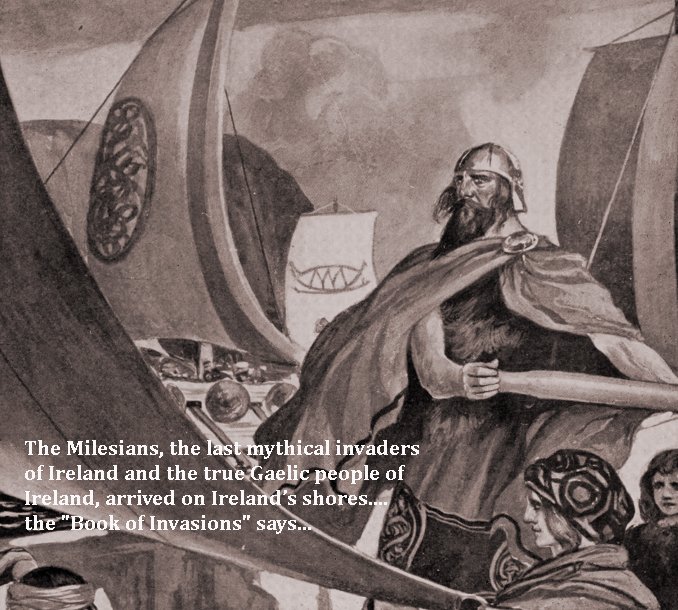
"The Coming of the Sons of Miled", illustration by J. C. Leyendecker in T. W. Rolleston's Myths & Legends of the Celtic Race, 1911
The Milesian chief decided to call the island after Eriu, whose prophecy she proclaimed was the most favorable.
Legend has it, two names of her two sisters, were occasionally used as poetic names for Ireland.
Eriu Related To Different Deities
In different texts, Eriu is associated with the Fomorians, the great god Dagda and Lugh, one of the greatest heroes. Eriu fell in love with Fomorian king, named Elatha, the son of Fomorian Delbáeth (son of Neit). Usually most Fomorians were very ugly and deformed but Elatha was a handsome man.
It is said that Elatha seduced Eriu and she became the mother of their son, Bres. Elatha gave her a ring, so that he would later recognize his own son, who became the half-Fomorian king. It is also believed Eriu was the lover of the hero Lugh.
Powerful Divine Eriu Controlled Lands And Seas
In ‘The Encyclopedia of Celtic Mythology and Folklore’, Patricia Monaghan mentions one legend about the invasion of the Milesians and a man, Donn mac Miled, also known as Éber Donn ("Dark or Brown Éber"). The man was a malevolent and envious figure who at the meeting between the Milesians and the goddess Eriu, replied to Eriu's demands with insults. Eriu responded to his humiliations and calmly sentenced him to death.
He drowned shortly thereafter.
The Hill of Uisneach, Eriu's Divine Place
The place is considered to be mythological and sacred center of Ireland.
Uisneach has the most famous feature, the so-called Catstone ("Ail na Mireann" - the stone of divisions). It is known as 'Umbilicus Hinerniae' -Axis Mundi and the navel of Ireland. It is beneath this sacred stone that Eiru, the powerful goddess of Ireland after whom the country is named, was laid to rest.
The sacred place also known as ‘Axis Mundi’, and ‘the Naval of Ireland’. is also burial site of the famous hero, the sun god, Lugh. Historically, Uisneach was believed to be a gate to the mythical fifth province, Mide, which held the four more familiar provinces of Ireland, together.
Even today, this enigmatic hill that stands just 596ft above sea level, is one of the most sacred and historic sanctuaries in the world.
Written by – A. Sutherland - AncientPages.com Senior Staff Writer
Copyright © AncientPages.com All rights reserved. This material may not be published, broadcast, rewritten or redistributed in whole or part without the express written permission of AncientPages.com
Expand for referencesReferences:
Sian Echard S, Rouse R, Jacqueline A. Fay J.A, Fulton H. Rector G. The Encyclopedia of Medieval Literature in Britain
Williams M. Ireland's Immortals
More From Ancient Pages
-
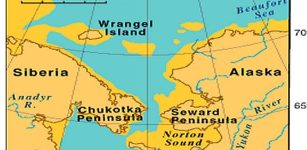 A Scientific Surprise: Bering Land Bridge Formed Late During Last Ice Age
Archaeology | Dec 27, 2022
A Scientific Surprise: Bering Land Bridge Formed Late During Last Ice Age
Archaeology | Dec 27, 2022 -
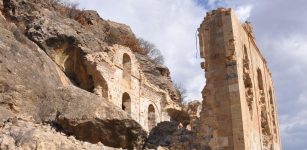 Orthodox Church In Black Sea Region Looted By Treasure Hunters
Archaeology | Feb 24, 2021
Orthodox Church In Black Sea Region Looted By Treasure Hunters
Archaeology | Feb 24, 2021 -
 Ancient DNA Of Segorbe Giant Reveals A Brutal Event In Medieval Spain
News | Sep 26, 2021
Ancient DNA Of Segorbe Giant Reveals A Brutal Event In Medieval Spain
News | Sep 26, 2021 -
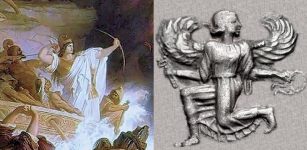 Artemisia I Of Caria – Pirate Queen And Ally Of Xerxes I Was Loyal To No-One Except Herself
Featured Stories | Mar 4, 2019
Artemisia I Of Caria – Pirate Queen And Ally Of Xerxes I Was Loyal To No-One Except Herself
Featured Stories | Mar 4, 2019 -
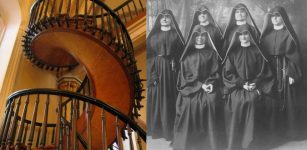 Legend Of The Loretto Chapel Staircase – Unusual Helix-Shaped Spiral Construction
Featured Stories | Nov 1, 2018
Legend Of The Loretto Chapel Staircase – Unusual Helix-Shaped Spiral Construction
Featured Stories | Nov 1, 2018 -
 Unusual Parcel With 500-Year-Old Horn Container Discovered In South Africa Sheds Light On Pre-Colonial Khoisan Medicines
Featured Stories | Feb 15, 2023
Unusual Parcel With 500-Year-Old Horn Container Discovered In South Africa Sheds Light On Pre-Colonial Khoisan Medicines
Featured Stories | Feb 15, 2023 -
 Bjorn Ironside: Famous Viking Who Captured Luna By Mistake Instead Of Ancient Rome As Planned
Featured Stories | Jun 11, 2016
Bjorn Ironside: Famous Viking Who Captured Luna By Mistake Instead Of Ancient Rome As Planned
Featured Stories | Jun 11, 2016 -
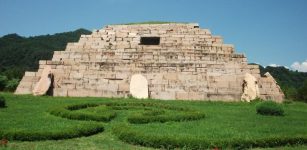 Complex Of Goguryeo Tombs: Beautiful Ancient Wall Paintings Displaying History And Mythology Of North Korea
Civilizations | Oct 19, 2018
Complex Of Goguryeo Tombs: Beautiful Ancient Wall Paintings Displaying History And Mythology Of North Korea
Civilizations | Oct 19, 2018 -
 Puzzling Jewellery From Grave Of High Status Viking Woman Delivered At Museum’s Door
Artifacts | Jul 23, 2022
Puzzling Jewellery From Grave Of High Status Viking Woman Delivered At Museum’s Door
Artifacts | Jul 23, 2022 -
 More Than 27,000 Artifacts Illegally Collected By ‘Expert In Archaeology’ – Seized In France
Artifacts | Dec 18, 2020
More Than 27,000 Artifacts Illegally Collected By ‘Expert In Archaeology’ – Seized In France
Artifacts | Dec 18, 2020 -
 Mysterious Artifacts Scattered Around Mount Baigong, China
News | Jun 23, 2014
Mysterious Artifacts Scattered Around Mount Baigong, China
News | Jun 23, 2014 -
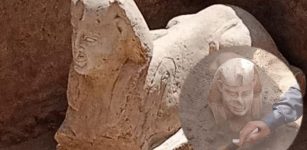 Sphinx Statue With A Smiley Face And Two Dimples Unearthed In Qena, Egypt
Archaeology | Mar 6, 2023
Sphinx Statue With A Smiley Face And Two Dimples Unearthed In Qena, Egypt
Archaeology | Mar 6, 2023 -
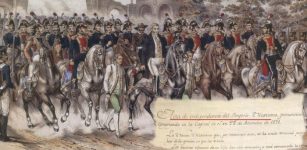 On This Day In History: Declaration Of Independence Of The Mexican Empire Is Drafted – On Sep 28, 1821
News | Sep 28, 2016
On This Day In History: Declaration Of Independence Of The Mexican Empire Is Drafted – On Sep 28, 1821
News | Sep 28, 2016 -
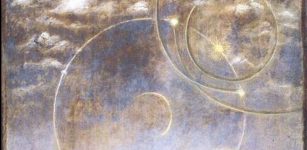 On This Day In History: Vädersol Painting Depicting ‘Sun Dog’ Phenomenon Observed Over Stockholm – On Apr 20, 1535
News | Apr 20, 2016
On This Day In History: Vädersol Painting Depicting ‘Sun Dog’ Phenomenon Observed Over Stockholm – On Apr 20, 1535
News | Apr 20, 2016 -
 Impressive And Rare Hoard Of Silver Coins Dated To The Hasmonean Period (126 BC) – Studied
Archaeology | Oct 14, 2021
Impressive And Rare Hoard Of Silver Coins Dated To The Hasmonean Period (126 BC) – Studied
Archaeology | Oct 14, 2021 -
 Extraordinary Discovery Of First Viking Tower In Viborg, Denmark Re-Writes Viking History
Archaeology | Jan 30, 2017
Extraordinary Discovery Of First Viking Tower In Viborg, Denmark Re-Writes Viking History
Archaeology | Jan 30, 2017 -
 The Day When The Sun Did Not Come Out – Bizarre Event In 1780, New England
Featured Stories | Apr 18, 2023
The Day When The Sun Did Not Come Out – Bizarre Event In 1780, New England
Featured Stories | Apr 18, 2023 -
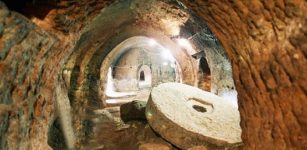 Underground Labyrinth With Secret Passages, Tunnels In Dobrogea Plateau, Romania
Featured Stories | May 9, 2022
Underground Labyrinth With Secret Passages, Tunnels In Dobrogea Plateau, Romania
Featured Stories | May 9, 2022 -
 15 New Archaeological Finds Unearthed In Pre-Inca Ruins Of Tiwanaku, Bolivia
Artifacts | Jan 27, 2021
15 New Archaeological Finds Unearthed In Pre-Inca Ruins Of Tiwanaku, Bolivia
Artifacts | Jan 27, 2021 -
 Mystery Of The Ancient Unknown Mining Civilization In North America – Puzzling Archaeological Discoveries – Part 1
Civilizations | Apr 18, 2022
Mystery Of The Ancient Unknown Mining Civilization In North America – Puzzling Archaeological Discoveries – Part 1
Civilizations | Apr 18, 2022

